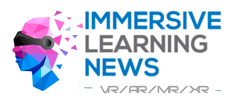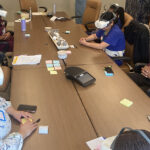Have you ever imagined walking into a classroom and find that students can casually journey to ancient Rome, dissect a digital frog or else explore our solar system without much effort and through a headset? It is not a science fiction, but a reality in the world of technology. It is in fact the future of VR in education and of course closer than many may even realize. Virtual Reality (VR) is reshaping the way students learn and obviously the way educators teach. It is bringing a new level of immersion, personalization as well as engagement to academic environments.
What Is Future of VR in Education?
Future of VR in education simply refers to the gradual adoption of immersive technologies to allow students to easily interact with educational content in a virtual space. Learners can now easily enter 3D environments through VR headsets and software platforms. They can manipulate objects, participate in simulations and even engage with material in various ways which of course go far beyond traditional textbooks or sometimes even modern e-learning platforms.
The future includes personalized learning paths, gamified experiences, virtual classrooms and realistic simulations which are dedicatedly tailored for subjects like chemistry, literature, history and medicine. Future of VR in education will blend cognitive science with extremely advanced technology to create practical experiences.
Why Have VR in Classrooms
Educators are gradually witnessing a shift and future of VR in education will be based on several key advantages and not just a passing trend:
Immersive Learning Environments
Traditional classrooms can explain abstract concepts, but students can step inside a human heart, orbit Mars or visualize complex geometry with the help of VR. The sensory engagement is to enhance retention and deepen the understanding level for the students.
Equal Access to Experiences
Many students may not get an opportunity to travel abroad or experience a world-class laboratory. Future of VR in education has the answer and can allow them to access the experiences virtually. Under-resourced schools will be benefiting the most and the technology can help in increasing the level of education for them.
Safe, Controlled Simulations
Medicine, engineering, aviation and more such streams require real-world training. Such trainings are expensive as well as risky. VR is the answer here again as it provides a safe space to learn from mistakes and refine skills. VR is a key part of the future educational experience.
Real-World Examples of Future of VR in Education
Future of VR in education is not just in theory, but it is happening right now in many institutions. Australian edtech startup Mindflight7 has created immersive career and curriculum experiences. It is now being used in hundreds of schools. The platform allows students to roleplay various professions or explore complex science topics with high levels of interactivity.
Schools in the U.S. are using zSpace, ClassVR and more such platforms to teach anatomy, art, history and more. Universities are experimenting with virtual labs. Corporate training programs are employing VR to simulate customer interactions.
Benefits Backed by Research
Studies are show interests in VR in education as it is improving their learning outcomes. A recent research published in Springer’s journal Education and Information Technologies revealed that immersive learning are helping in the development of emotional intelligence, improving information retention and also increasing student motivation.
One study found that students using VR to learn biology performed better by 30% on tests compared to others who learned through traditional methods. The results clearly reveal that future of VR in education will become the key in education system.
Challenges
Future of VR in education is of course promising, but it also comes with some serious challenges:
Cost: VR headsets and platforms are expensive and this limits access in underfunded schools. However, it is believed that technology may become more affordable over the time.
Content Creation: There is of course a need for high-quality and curriculum-aligned VR content. Collaboration between educators and developers is highly important to ensure that the VR experiences are pedagogically sound.
Technical Limitations: All the schools may not have the infrastructure or IT support to maintain VR systems. They need to even invest in teacher training. Technical support is highly important for long-term success.
Expansion of Future of VR in Education
Future of VR in education will expand as technology advances and it is to include Artificial Intelligence (AI), Augmented Reality (AR) as well as advanced data analytics. The additions are sure to enable even more personalized and adaptive learning experiences.
Just imagine an AI-powered VR tutor that can adjust difficulty based on the performance of student or offer real-time feedback. Fusion of such technologies could lead to a future where learning will become immersive as well as fully customized.
We may also see in the future the rise of VR campuses. Students from around the world can log in to it to attend live as well as interactive lectures in virtual environments. There will be really no need to travel or apply for visa to travel to a country for the purpose.
Quelle:


